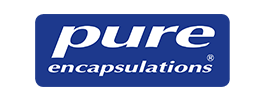
This blog entry is about the mistakes we make that create blind spots in our case management processes. In working with patients whose challenges are complex, skilled clinicians work hard to avoid unearned box checking. This occurs when you decide or assume that you’ve taken care of a component of the case, but you haven’t earned the information that would tell you it’s suitable to check the box.
There is also a more egregious form of unearned box checking. This occurs when a clinician decides, based on essentially nothing, that they understand the case, and that the best course of action is to give empty reassurance to the patient. The clinician has done no workup, exerted no effort to understand the case, demonstrated no curiosity or capacity to go outside their own comfort zone.
For example, I met a delightful 45-year-old executive, on disability because her lupus and dysautonomia are so poorly controlled. Her internist’s comment to her recently was, “You just need to lose weight and reduce your stress level.” That’s unearned box checking. The internist feels clear that this is good guidance. But he did no work to earn that point of view. Unearned box checking can be damaging, first because it yields guidance that is factually incorrect, so the patient trying to choose a course of action is using bad information. Second, because the guidance is disenfranchising and belittling. The clear message is that the patient is not trying hard enough. If they just made a bigger effort, they wouldn’t have the problem. For this patient, a Fortune 100 VP who burned herself out with overwork, that’s the wrong message. If the clinician had worked harder to understand the patient, he would have known that was the wrong thing to say. But he didn’t do enough work to earn any of his ideas about the case, or his comments to the patient. He just formed an idea, did no work to figure out if his idea had any merit, checked the “I know what this is” box, and proceeded to mismanage the case.
In functional medicine practice, the invitation to check boxes without earning the right to do so can present itself in more subtle forms. In each case, accepting the invitation to check the box can diminish your likelihood of success, by installing an unexamined spot, essentially a blind spot, in your image of the case. Here are a few:
The patient’s vitamin D or glutathione or other level is low. You give the appropriate supplement but you don’t repeat the lab test. You don’t really know if you gave them the right amount without at least one retest. The mistake is, “I gave them D, so I took care of their low D.” Box checked.
Similarly, the patient’s hsCRP or GlycA level is high. You give them supplements aimed at reducing inflammation, but you don’t retest to see if the inflammatory marker levels came down into the normal range. The mistake is, “I gave curcumin / resveratrol / fish oil / D / boswellia etc., so I took care of their inflammation.” Box checked.
One of the most important points of discernment related to earned vs. unearned box checking has to do with labs for new patients. I always do a lot of lab work. Some of it helps me fill in details within my image of the biology of the case. And some of it is to leave myself open to surprises. When you find yourself saying, “We don’t need to test that. It’s probably fine,” that’s when you should be thinking, “What is the basis for my belief that I know what that lab result would be? How did I earn the right to check that box?”
Now, in some cases, it’s reasonable to proceed in stages, especially if you practice in a situation in which getting lab tests is challenging. You could frame the endeavour as, “We’re going to proceed on this basis for a defined period of time, using these assumptions. But I want you (the patient) to understand that we’re taking an approach that has some assumptions built into it. They’re likely to be true, but that’s not the same thing as being clear that they’re true. The way to earn that clarity, or to earn new information that’s different from our assumptions, is to do more testing. “Eight weeks from now, we’ll evaluate where we are. If you’re making progress, it lends weight to the idea that our assumptions are correct and we’ve earned the right to continue with our approach. If you’re not making progress, it’s time to earn some more information by testing.”
A more challenging one comes up when you decide to discontinue something because the patient isn’t discerning a difference when they take it. This is challenging when the patient has not yet begun to make any significant progress. They feel just as bad, though they’ve been taking the particular supplement for a month. If the supplement is necessary to their progress, but it will only work as part of a group, the other two parts of which you haven’t figured out to give yet, withdrawing the supplement in question will be a mistake. The mistake is, “This didn’t change anything, so stop taking it.” The mental mistake is, “I know this isn’t doing anything.” That’s an unearned assumption. If your image of the biology of the case gives you a strong expectation that the supplement in question is useful, a better approach is to add other supports until the patient’s function is greatly improved. At that point, you can start to reduce doses and discontinue supplements. This avoids making decisions on the basis of unearned assumptions.
In some sense, all these examples, and many more, are versions of the difference between “makes sense” and “turns out to be true.” A lot of things that make sense turn out not to be true. As practitioners, we need to understand the difference, so we can identify assumptions we may have made, or that we may have inherited when we started working with a patient who, upon arrival, carries several diagnoses.
What often helps in these situations is to remember that assumptions are testable. You can get information with lab tests, or with imaging, or by asking a patient to stop eating a food, or change sleep patterns, or take a supplement, etc. If you do enough lab work up front if you’re able, and if you craft the cycles of your instructions carefully enough to get information from patient observations, you can start to accumulate a solid footing as some of your assumptions are corroborated and others go by the wayside.
Share:
Related Posts

Why Would I Test Positive To Foods On A Dietary Antigen Test That I Don’t Eat?
Written by Precision Point Diagnostics | 2025 True food allergies are when the body develops antibodies against a particular food, or a related food. Patients

Mitochondria: The Overlooked Link in the Gut-Brain Axis
Written by Dr Sarah Daglis | 2025 The gut-brain axis is well-established, but there’s more to this dynamic relationship than meets the eye. A vital

Unlocking Respiratory Resilience Through Functional Medicine
Article written by Dr Michelle Clark Naturopathic Doctor Clinical Education Manager, FxMed Published 1 September 2024 People take supplements to improve or optimize their health.

AHCC: Unlocking the Immune Intelligence of Shiitake Mycelia
Article written by Jessica Sanders BSc. (Psy), Dip Nat, Dip Med Herb Technical Projects, FxMed Published 1 September 2024 People take supplements to improve or

Life After Weight Loss Meds
Kathi Head, ND February 20, 2025 You would have to have been spending glorious hours lying on the beach on a desert island not to


